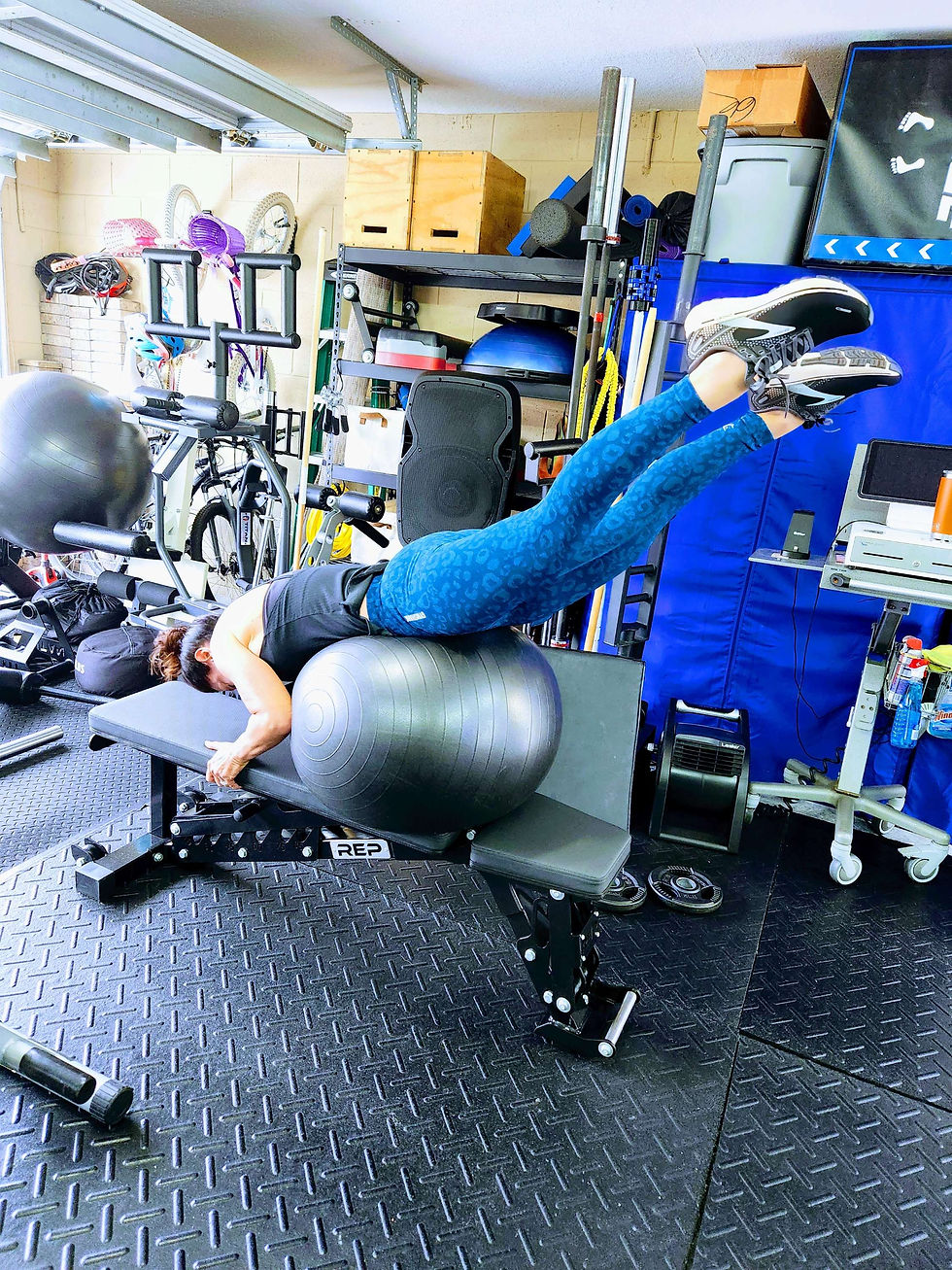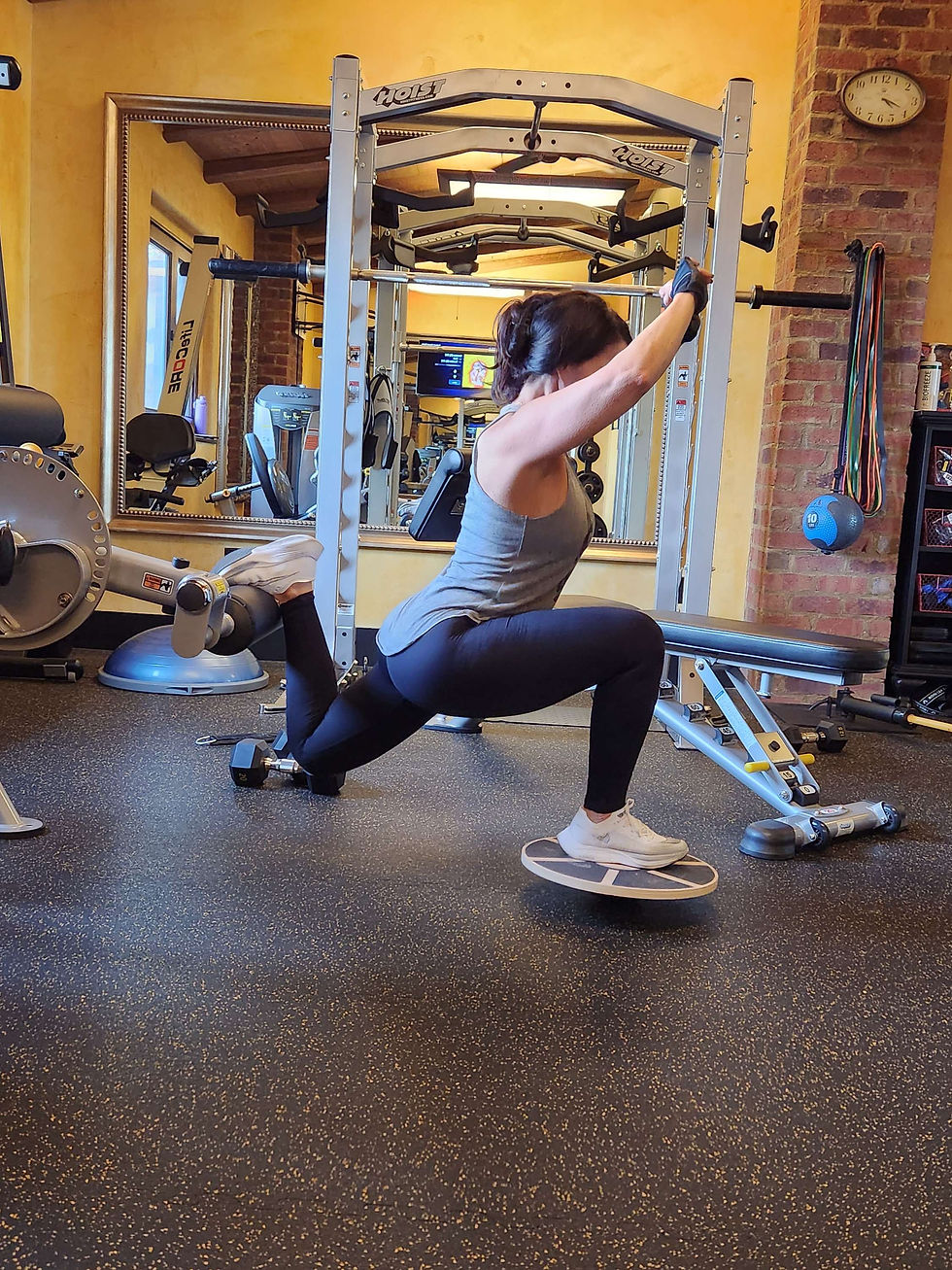The Ever-Evolving Landscape: Top 25 Fitness Trends of All Time
- David Polomie
- Dec 3, 2023
- 4 min read

The world of fitness is a dynamic landscape, constantly influenced by changing trends and evolving preferences. Over the years, we've witnessed a diverse array of fitness trends, from classic workouts to cutting-edge technologies. Join REPS Personal Training as we journey through the top 25 fitness trends of all time, highlighting the impactful and enduring movements that have shaped the way we approach health and wellness.
1. Jogging (1960s):
The simple act of jogging gained popularity in the 1960s, marking the beginning of the modern fitness era. With its accessibility and cardiovascular benefits, jogging became a staple in many people's exercise routines.
2. Aerobics (1980s):
Aerobics exploded onto the scene in the 1980s, led by iconic figures like Jane Fonda. These high-energy, dance-based workouts became a cultural phenomenon, promoting cardiovascular health and toning.
3. Bodybuilding (1970s):
The 1970s witnessed the rise of bodybuilding as a mainstream fitness trend, thanks in part to Arnold Schwarzenegger. Gyms became havens for those seeking to build muscle mass and sculpt their physiques.
4. Yoga (Ancient, Popularized in 1960s):
While yoga has ancient roots, it gained widespread popularity in the 1960s as a holistic practice that promotes flexibility, strength, and mental well-being.
5. Pilates (1920s):
Created by Joseph Pilates, this low-impact exercise method focuses on building core strength and flexibility. Pilates has endured through the decades, influencing various fitness disciplines.
6. Step Aerobics (1980s):
Step aerobics, involving choreographed routines using an elevated platform, gained prominence in the 1980s. The rhythmic movements provided a cardiovascular workout while targeting lower-body muscles.
7. Kickboxing (1990s):
Blending martial arts and cardiovascular exercise, kickboxing workouts became popular in the 1990s. The dynamic movements attracted individuals seeking a high-intensity, full-body workout.
8. Indoor Cycling (1990s):
Spinning classes, utilizing stationary bikes, became a fitness staple in the 1990s. The intense cardio workouts set to music created a group exercise experience that resonated with many.
9. Tai Chi (Ancient, Popularized in the West in the 20th Century):
Originating from ancient China, tai chi gained popularity in the West during the 20th century. Known for its slow, flowing movements, tai chi promotes balance, flexibility, and relaxation.

10. Functional Training (2000s):
Functional training emphasizes movements that mimic real-life activities. This trend, gaining traction in the 2000s, focuses on building strength and mobility for everyday tasks.
11. CrossFit (2000s):
CrossFit, founded in 2000, revolutionized fitness with its varied and intense workouts. The competitive and community-driven nature of CrossFit made it a global phenomenon.
12. High-Intensity Interval Training (HIIT) (2010s):
HIIT gained popularity for its efficient approach to burning calories and improving cardiovascular health. Short bursts of intense exercise followed by rest periods resonated with time-conscious individuals.
13. Wearable Fitness Tech (2010s):
The 2010s saw the rise of fitness trackers and smartwatches, providing real-time data on physical activity, heart rate, and sleep patterns. Wearable tech became integral to personal health monitoring.

14. Bodyweight Training (2010s):
Utilizing one's own body weight for resistance, bodyweight training gained popularity for its simplicity and effectiveness. Calisthenics and bodyweight exercises became go-to workouts for many.

15. Functional Fitness (2020s):
The 2020s brought a renewed focus on functional fitness, emphasizing movements that improve daily activities. Workouts aimed at enhancing overall functionality gained popularity.
16. Mindful Movement (2020s):
The mind-body connection took center stage with the rise of mindful movement practices like yoga, tai chi, and qigong. These activities promote both physical and mental well-being.

17. Outdoor Fitness (2020s):
The pandemic spurred a surge in outdoor workouts, from running and hiking to outdoor group classes. Exercising in nature became a preferred option for many seeking a breath of fresh air.
18. Virtual Fitness Classes (2020s):
The convenience of virtual fitness classes skyrocketed in the 2020s, allowing individuals to access a variety of workouts and trainers from the comfort of their homes through apps and online platforms.
19. Plant-Based Diets (2020s):
Nutrition trends have a significant impact on fitness, and the adoption of plant-based diets gained momentum. Many embraced plant-based eating for ethical, environmental, and health reasons.
20. Recovery and Regeneration (2020s):
Recognizing the importance of recovery, practices like foam rolling, cryotherapy, and infrared saunas gained popularity. These methods aimed to enhance muscle recovery and overall well-being.
21. Parkour (2000s):
Parkour, originating from French military training, gained popularity in the 2000s. It involves navigating urban environments through running, jumping, and climbing, showcasing agility and strength.
22. Aquatic Exercise (1980s):
Water aerobics and other aquatic workouts gained popularity for their low-impact nature. The buoyancy of water provided resistance while being gentle on joints.
23. Suspension Training (2010s):
Suspension training, using straps to leverage body weight for resistance, gained traction for its versatility and effectiveness in building strength and stability.
24. Barre Workouts (2010s):
Inspired by ballet, barre workouts combined elements of dance, Pilates, and strength training. The focus on small, precise movements aimed to sculpt and tone muscles.
25. Mind-Body Connection (Various):
The integration of mind-body practices like yoga and Pilates into mainstream fitness underscored the importance of holistic well-being, emphasizing both physical and mental health.
The top 25 fitness trends of all time reflect the ever-evolving nature of the fitness industry. From classic workouts to innovative technologies, these trends have shaped how we approach health and wellness. As we continue into the future, the next wave of fitness trends is sure to bring new methods, technologies, and philosophies that inspire us to move, challenge ourselves, and prioritize our well-being.

Comments